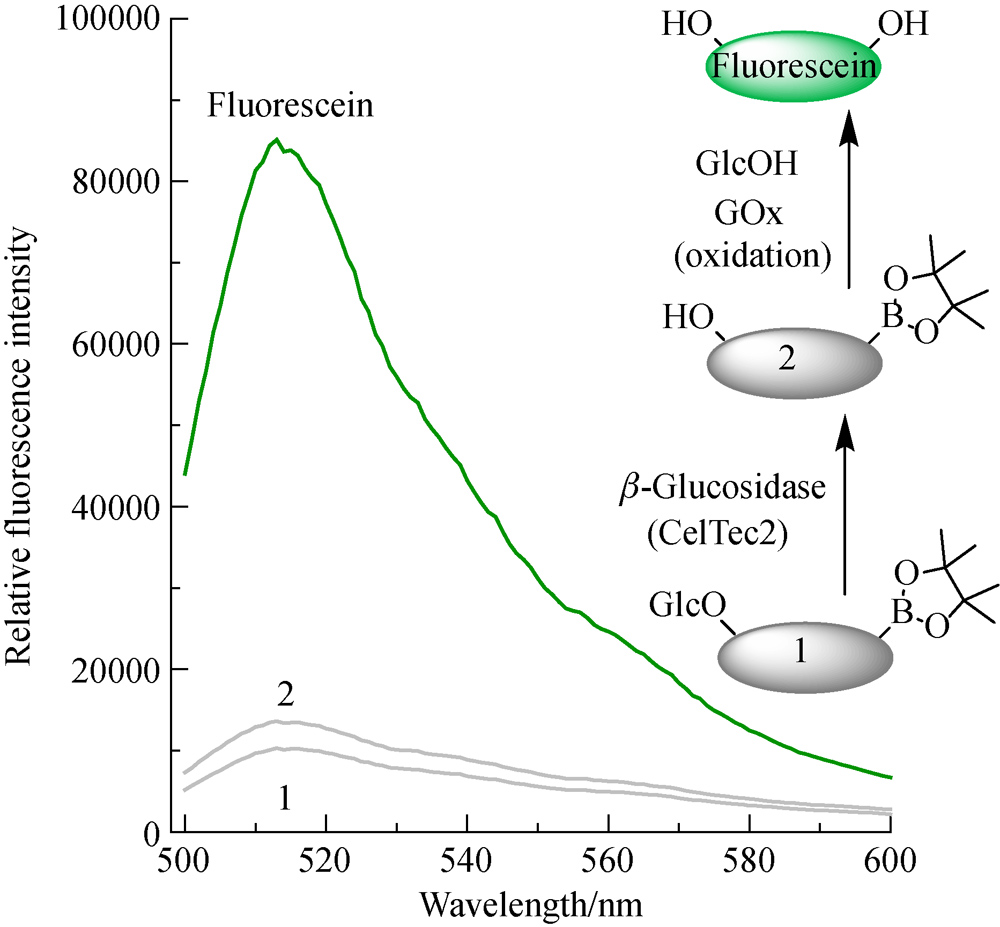Fluorescein derivatives are some of the most common fluorescent reagents for biological research, because of the excellent fluorescence quantum yield of the fluorescein and good water solubility. The fluorescein motif allows for dual-activated sensor systems as it has two free phenolic alcohols which can be derivatised independently, as illustrated by James et al. [
15]
. Therefore, in this work, we have used a similar strategy by incorporating glucose onto the mono-boronate fluorescein,
PF3 [
16] to form
PF3-Glc.
PF3-Glc was able to undergo a unique reaction cascade, in which glucose is generated as a product of a reaction between
PF3-Glc and
β-glc. In turn, the glucose reacts with GOx to produce H
2O
2, which results in the formation of highly fluorescent fluorescein through H
2O
2-mediated oxidation of the boronate ester (Scheme 1).








